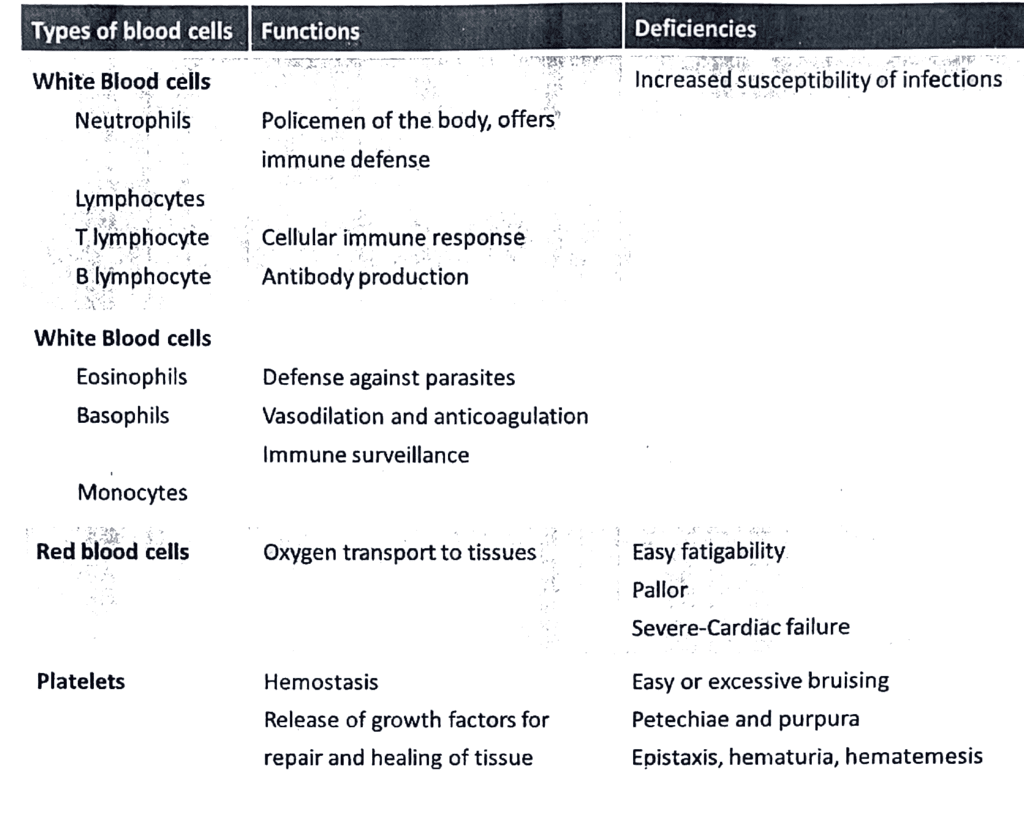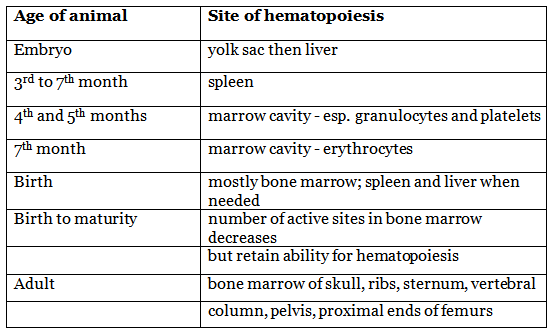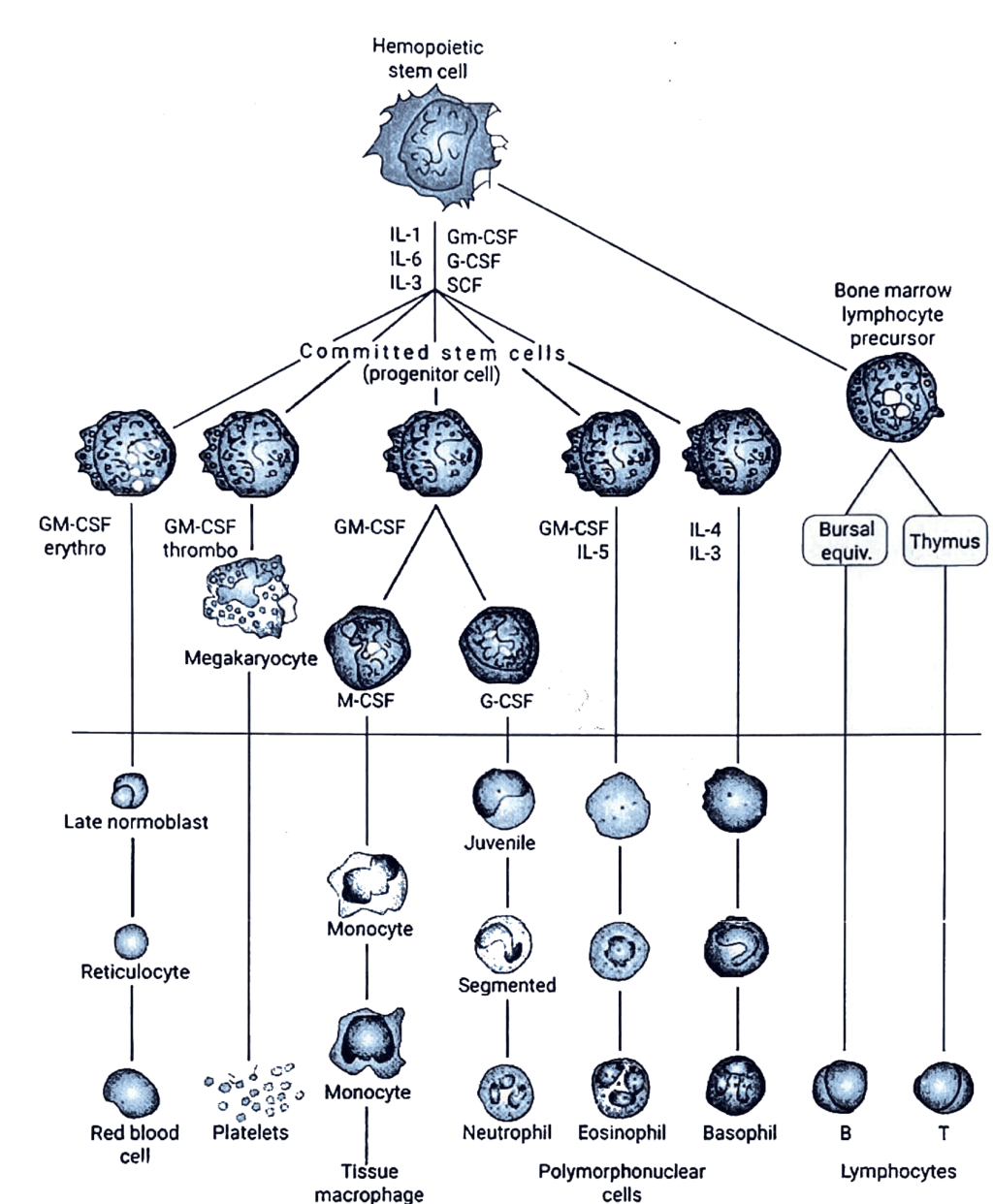Hematopoiesis: Hematology | Medical Science Optional Notes for UPSC PDF Download
| Table of contents |

|
| Hematology-Repeats |

|
| Hematopoiesis |

|
| Theories of Blood Cell Formation |

|
| Monophyletic Theory of Hematopoiesis |

|
Hematology-Repeats
Hematopoiesis
Q1: List the various types of cells found in the blood and their functions. What will happen due to deficiency of each type? (2012)
Q2: Describe the normal development and differentiation of hematopoietic cells (2007).
Q3: List the various types of cells found in blood and the precursor cell, function and normal values of each (2005).
Q4: Give an account of monophyletic theory of haematopoiesis. (2018)
Erythropoiesis
Q5: Describe how iron is absorbed, transported and stored in our body. Give the different tests done to assess status of iron in the body. (2017)
Q6: What is the regulatory mechanism of iron absorption at the level of intestine? What is the role of TIBC in iron metabolism? How does the body conserve iron? (2018)
Q7: Enumerate the sites for formation of erythrocytes in the embryo, foetus and adults. Describe the characteristic changes in the cytoplasm and nucleus during erythropoiesis. (2017)
Q8: Enumerate the factors required for normal erythropoiesis. Why polycythemia occurs at high altitude? (2013)
Q9: Write the morphology of red blood corpuscles. List the factors required for their formation and mention how the shape is advantageous. (2010)
Thrombopoiesis
Q10: Describe the morphological characteristics of platelets and their functions. What will happen in their deficiency? (2014)
Q11: Discuss in short the morphology, functions and disorders of platelets (2009).
Q12: How are platelets formed? Describe the properties and functions of platelets (2001).
Q13: Explain regulation of megakaryocytopoiesis (2018)
Types of cells in the blood

Hematopoiesis
Hematopoiesis is the process by which immature precursor cells develop into mature blood cells.

Theories of Blood Cell Formation
Monophyletic Theory (Unitary Theory):
- Proposed by: A.A. Maksimov
- Description: Also known as the Unitary Theory, this concept suggests a common parent cell for all forming elements of blood. The indifferent mesenchymal cell is proposed as the shared precursor capable of forming cells of the lymphoid, myeloid, and erythroblast lines. This theory was introduced by the Russian histologist more than 100 years ago.
Dualistic Theory:
- Proposed by: Erlich, Schridde, O. Naegeli
- Description: The Dualistic Theory posits two sources of hematopoiesis: myeloid and lymphoid. According to this theory, blood cells originate from two distinct stem cell lines. This perspective suggests a dichotomy in the development of blood cells, emphasizing the myeloid and lymphoid pathways.
Polyphyletic Theory (Trialistic Theory):
- Proposed by: Laschoff
- Description: Also known as the Trialistic Theory, the Polyphyletic Theory proposes that different groups of blood cells originate from different stem cells. In this view, three systems are identified: myeloid, lymphoid, and reticuloendothelial. This theory implies a more complex and diversified origin of blood cells, with three distinct stem cell lines contributing to hematopoiesis.
These theories represent historical attempts to explain the developmental origins of blood cells. While the Unitary Theory (Monophyletic) remains the most commonly accepted and widely taught, it's important to note that the field of hematopoiesis has evolved, and current understanding involves a more nuanced appreciation of the specific progenitor cells and pathways involved in the formation of different blood cell types.
Monophyletic Theory of Hematopoiesis
The monophyletic theory of hematopoiesis proposes a hierarchical and unidirectional model for the development of blood cells. Here are the key aspects of this theory:
Pluripotent Stem Cells:
- The process begins with pluripotent stem cells, which have the capacity to differentiate into various cell types. These stem cells are undifferentiated and possess the ability to self-renew.
Multiplication of Pluripotent Stem Cells:
- Pluripotent stem cells multiply, generating additional pluripotent stem cells. This multiplication ensures a steady and sustained supply of stem cells, crucial for the continuous production of blood cells.
Differentiation into Precursor Cells:
- Some of the pluripotent stem cells undergo differentiation into precursor cells. These precursor cells are partially committed to becoming a specific type of mature blood cell.
Commitment to Mature Blood Cells:
- The precursor cells, having undergone partial commitment, further differentiate into mature blood cells. This commitment may lead to the development of various cell lineages, including erythrocytes, leukocytes, and platelets.
Steady Supply of Stem Cells:
- The ongoing multiplication of pluripotent stem cells ensures a continuous and lasting supply of these cells, supporting the sustained production of blood cells throughout an individual's life.
In summary, the monophyletic theory underscores the importance of pluripotent stem cells as the source of all blood cell lineages. The concept of self-renewal and commitment to specific lineages through differentiation plays a central role in this theory, emphasizing the hierarchical and unidirectional nature of hematopoiesis.
Cytokines involved in process of hematopoiesis
- GM-CSF, G-CSF, M-CSF: colony stimulating factors
- Erythropoietin (EPO): differentiation of erythroid precursors
- IL-3, SCF, c-kit receptor: regulate stem cell development
- IL-4: mast cell development
- IL-5: eosinophil differentiation and proliferation
- IL-6: differentiation of B cells
- IL-7: differentiation of B and T cells
- IL-8: promotes cell survival in response to hematopoietic cytokines
- IL-9: mast-cell growth factor
- IL-11: elevates platelet counting patients given chemotherapy
- IL-12: expands and activates resting NK cells
- IL-15: expands and activates resting NK cells
- IL-21: limits viability of NK cells
 Hematopoiesis
Hematopoiesis
|
7 videos|236 docs
|
FAQs on Hematopoiesis: Hematology - Medical Science Optional Notes for UPSC
| 1. What is hematopoiesis? |  |
| 2. What are the theories of blood cell formation? |  |
| 3. What is the Monophyletic Theory of Hematopoiesis? |  |
| 4. How does hematopoiesis occur? |  |
| 5. What are the functions of red blood cells, white blood cells, and platelets? |  |















